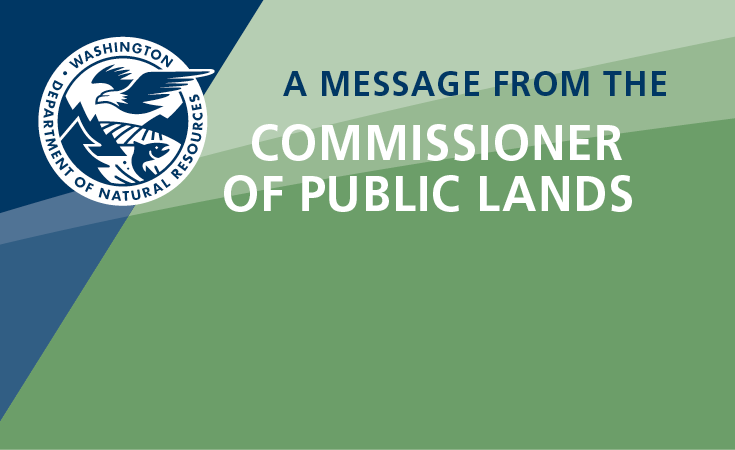DNR Starts New Project to Remove Tens of Thousands of Polluting Tires from Puget Sound
News Date:
October 24, 2024
The agency kicked off the large-scale cleanup with a pilot project off Tolmie State Park.
One more threat to the health of Puget Sound is being removed, as the Washington Department of Natural Resources (DNR) has begun the first removal of makeshift tire reefs as part of the agency’s new Tire Pile Removal Program.
The tires, which were installed as artificial reefs in the 1960s-80s by several Washington state groups to increase habitat for dwindling rockfish and lingcod populations, pose an increasing environmental threat. One that DNR is working to alleviate through this program.
“The health of Puget Sound is at the root of who we are as Washingtonians,” said Commissioner of Public Lands, Hilary Franz. “That’s why it’s so important we remove pollutants like these tire reefs now before they become a larger problem across the Puget Sound.”
DNR has identified 14 sites with tire reefs in the Puget Sound. DNR crews spent several years intensively mapping these tire reefs with multibeam sonar and GIS. The project is part of DNR’s Watershed Resilience Action Plan (WRAP) to protect and restore salmon habitat.
The first of these removal projects began removals last week as crews using an excavator and dive team began removing approximately 2,500 tires from the site off Tolmie State Park near the mouth of the Nisqually River.
“This has been a long time coming.” said Nisqually Indian Tribe Chairman, Ken Choke. “Although the intention was to provide somewhat of a safety mechanism, there was no clear understanding of what type of danger these tires imposed to our resources, and how they would still be impacting the waters of Puget Sound still to this day.”
The polypropylene rope holding bundles of tires together is wearing down, causing tires to drift and pollute waterways and beaches. Once on land, the tires break down faster which can result in microplastics spreading into the environment. The piles also collect fishing line and other debris underwater that can entangle wildlife.
With so many removal sites left, the agency hopes to secure more funding for more removals in the upcoming legislative session.
Cataloging and surveying the tire piles of Puget Sound has been a joint effort and wouldn't be possible without the collaboration of the Washington Department of Ecology (DOE), the Washington State Parks and Recreation Commission (WSPRC), the Washington Department of Fish and Wildlife (WDFW), the Washington Scuba Alliance (WSA) and Nations and Tribes of Washington State.
About DNR: Ensuring Washington’s Aquatic Lands Remain Healthy and Productive
As stewards of more than 2.6 million acres of state-owned aquatic lands, we are responsible for ensuring protection of habitat and fostering public access and water-dependent activities for future generations. DNR generates revenue by selling the rights to harvest renewable resources like wild geoducks and other shellfish and from leasing and licensing state-owned aquatic lands. That revenue is reinvested to manage and restore Washington's aquatic ecosystems; keep them free of derelict maritime equipment; protect their health and productivity, and fund local projects that ensure the public can enjoy our aquatic lands.
###
MEDIA CONTACT
Zoe Love
Communications Manager
Cell: 360-790-1886


